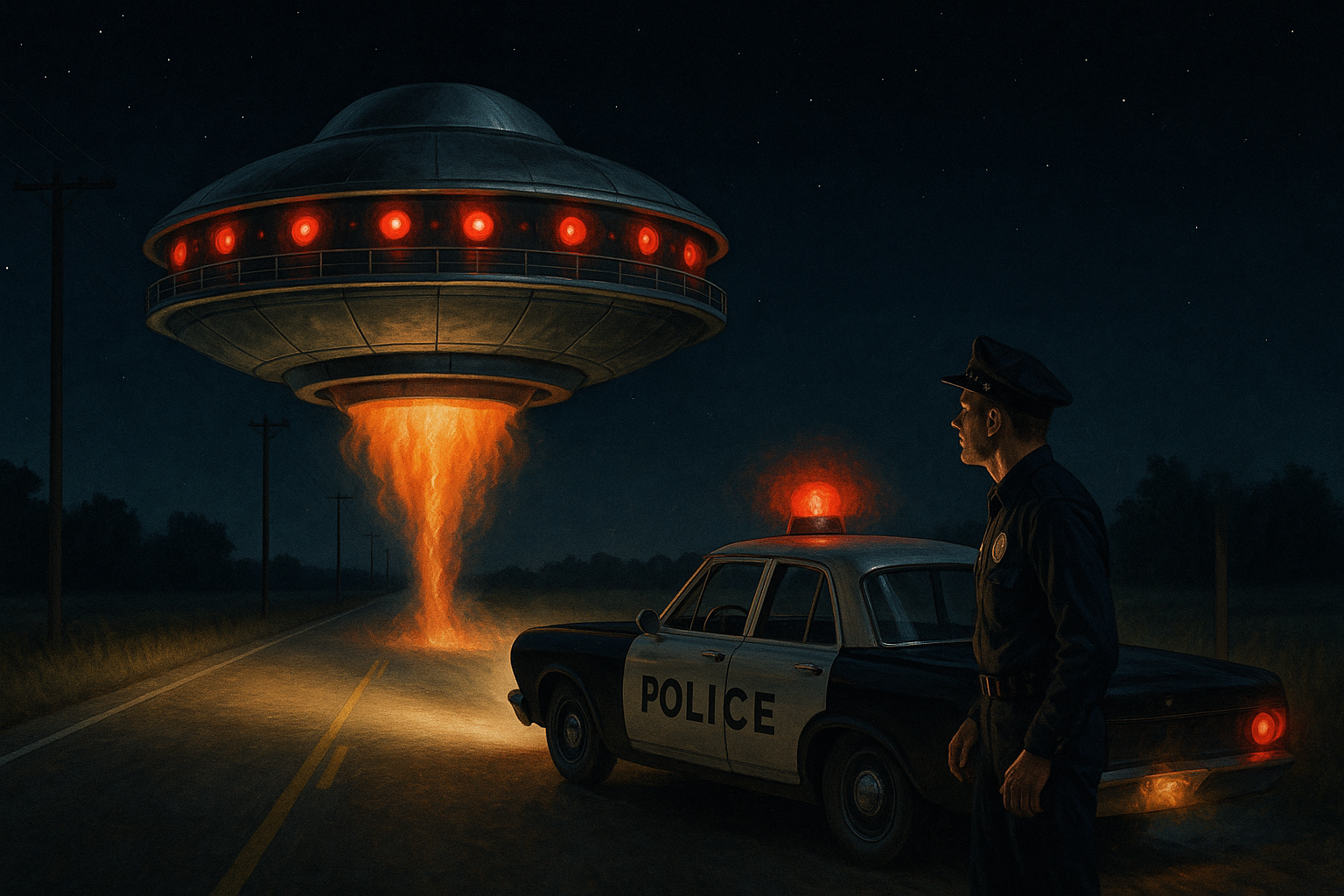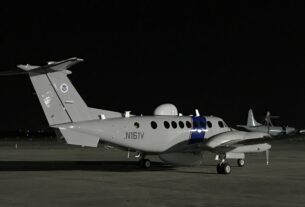On the chilly early morning of December 3, 1967, Herbert Schirmer, a 22-year-old police officer with the Ashland Police Department in Ashland, Nebraska, experienced what would become one of the most famous UFO encounters in American history. At approximately 2:30 a.m., Schirmer was patrolling alone in his cruiser along U.S. Highway 6 near its intersection with Nebraska Highway 63, a quiet rural stretch about 25 miles northeast of Lincoln. While checking on local businesses, he noticed red lights ahead, initially assuming they belonged to a stranded truck. As he approached, the lights resolved into a metallic, oval-shaped object, about 20 feet wide and 15 feet tall, hovering just 6 to 8 feet above the road with a slight tilt. Its polished aluminum surface gleamed under his high beams, punctuated by blinking red lights from porthole-like windows and a catwalk encircling it.
Schirmer stopped his car about 40 feet away, observing the craft as it ascended with a siren-like noise and a flame-like display from its underside. Startled, he watched it shoot upward and vanish, a moment he estimated lasted no more than ten minutes. Returning to the station, he noted in his logbook, “Saw a flying saucer at the junction of highways 6 and 63. Believe it or not!” Yet, upon arrival, he realized it was 3:00 a.m.—20 minutes unaccounted for. That morning, he suffered a headache, a buzzing in his head, and discovered a red welt, about two inches long and half an inch wide, on his neck below his left ear, which he couldn’t explain. Chief Bill Wlaschin later visited the site and found a small metallic artifact, though its significance remains unclear.

The story gained traction when Schirmer shared it with colleagues, leading to a lie detector test he passed, as Wlaschin confirmed to The World-Herald. Publicity soon followed, bringing ridicule—prank calls claiming Martian origins and a tire shop owner jokingly offering to sell tires to aliens—but also support from some locals who reported similar lights. In early 1968, the Condon Committee, a University of Colorado project funded by the U.S. Air Force to study UFOs, invited Schirmer for investigation. Under hypnosis by psychologist Dr. Leo Sprinkle, he recounted a more detailed narrative: the craft’s occupants, humanoid figures in uniforms with a winged serpent emblem, had approached his cruiser, prodded him with an instrument, and taken him aboard. They communicated telepathically, claiming to be from a galaxy next to ours, showing him a star map and a propulsion system, and stating they meant no harm but monitored Earth, promising future visits. Schirmer sketched the craft and beings, describing them as white and fuzzy yet man-shaped, with the session revealing a “remote control” sensation during the encounter.
The establishment narrative leans toward skepticism. The Condon Committee’s 1968 report, while acknowledging Schirmer’s sincerity, suggested the missing time and abduction memories might stem from hypnosis-induced confabulation or psychological stress, a view echoed by some historians like Mrs. Donald Graham, who attributed the lights to natural phenomena. The Air Force, through Project Blue Book, closed the case without conclusive evidence, favoring explanations like atmospheric effects or aircraft reflections, though no official aircraft were reported in the area. Critics question the lack of physical evidence beyond the welt and artifact, and the hypnosis process itself, which can implant false memories, raises doubts about the abduction details.
Yet, the case’s credibility persists. Schirmer’s police training and passing of the polygraph lend weight to his initial sighting, and the physical effects—headache, welt, and time loss—mirror other abduction reports. The winged serpent emblem, noted under hypnosis, intriguingly aligns with later accounts, like the 1972 Buenos Aires sighting of a sea-horse-like symbol, suggesting a pattern. The government’s interest, evidenced by the Condon Committee’s involvement, hints at a cover-up, though no declassified documents confirm this. Schirmer faced severe backlash, losing his job and retreating from public life until his death in 2017, a sacrifice that bolsters his account’s authenticity for believers. Graphic novels by Mike Jasorka and a 2019 Kinkaider Brewery beer, Star Snake Dank IPA, have kept the story alive, reflecting its cultural resonance.
Whether a genuine alien encounter, a psychological episode amplified by hypnosis, or a misinterpreted natural event, Herbert Schirmer’s 1967 UFO encounter remains a compelling enigma, blending rural Americana with the cosmic unknown.



